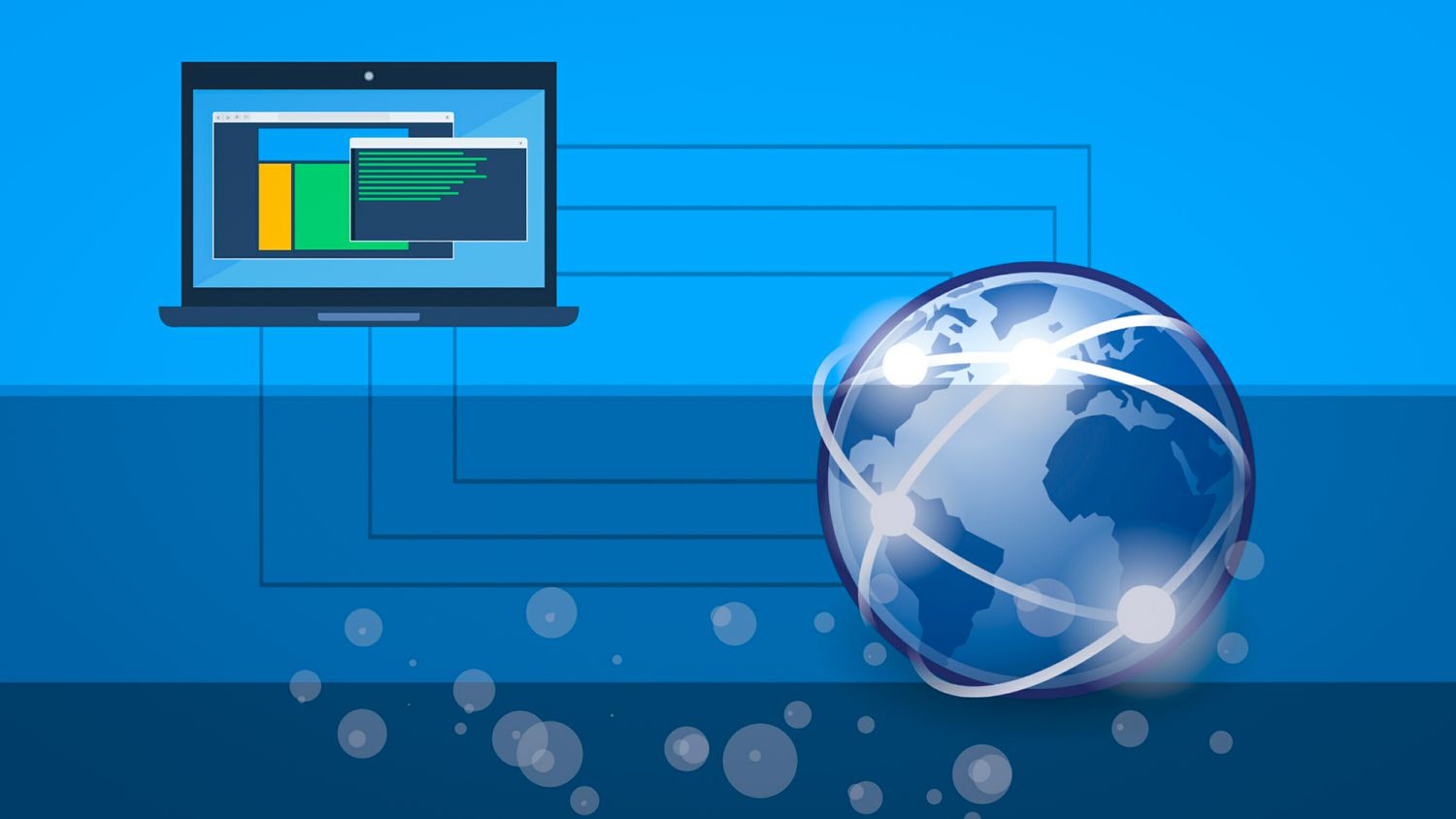
Computing is an integral part of our daily lives, shaping the way we work, communicate, and entertain ourselves. From the evolution of hardware to the rapid advancements in software, the world of computing is a fascinating and ever-changing landscape. In this article, we will delve into 32 intriguing facts about computing that shed light on the history, innovations, and impact of this dynamic field. Whether you're a tech enthusiast, a student of computer science, or simply curious about the inner workings of the digital world, these facts will offer a captivating glimpse into the realm of computing. So, let's embark on a journey through the realms of binary code, artificial intelligence, and the revolutionary inventions that have transformed the way we interact with technology.
Key Takeaways:
- The history of computing is filled with fascinating milestones, from the creation of the first computer virus in 1971 to the development of the world’s first website in 1991. These achievements have shaped the way we interact with technology today.
- Each fact in “32 Great Computing Facts” represents a significant moment in the ongoing story of technological progress, showcasing the remarkable impact of computing on modern society. It’s a testament to human ingenuity and the relentless pursuit of innovation.
The first computer virus was created in 1971.
This groundbreaking event marked the birth of malicious software, setting the stage for the evolution of cybersecurity measures.
The world's first website went live in 1991.
Tim Berners-Lee, a British computer scientist, launched the world's inaugural website, transforming the way information is accessed and shared globally.
The term "bug" originated from a real insect.
In 1947, computer pioneer Grace Hopper discovered a moth stuck in a relay, coining the term "bug" to describe a glitch or defect in a computer system.
The average computer user blinks 7 times per minute, compared to the normal blink rate of 20 times per minute.
This fact highlights the impact of technology on human behavior and physiology, shedding light on the implications of prolonged screen exposure.
The first computer mouse was invented in 1964.
Douglas Engelbart, an American engineer, revolutionized human-computer interaction with the invention of the first computer mouse, paving the way for modern input devices.
The QWERTY keyboard layout was designed in 1873.
The QWERTY layout, still used in most keyboards today, was developed by Christopher Sholes to prevent jamming in typewriters, shaping the standard for keyboard design.
The world's first computer programmer was a woman.
Ada Lovelace, an English mathematician, is widely regarded as the world's first computer programmer, having developed an algorithm for Charles Babbage's early mechanical general-purpose computer.
The first gigabyte hard drive was announced in 1980.
IBM introduced the world's first gigabyte hard drive, revolutionizing data storage capabilities and laying the foundation for the digital storage revolution.
The first computer bug was a real insect.
In 1947, the term "bug" was coined when a moth caused a malfunction in the Harvard Mark II computer, marking the first documented computer bug.
The first electronic computer, ENIAC, weighed 27 tons and occupied 1,800 square feet.
This colossal machine, unveiled in 1946, represented a monumental leap in computing technology, setting the stage for the digital era.
The world's first computer virus was created as an experiment.
In 1971, the Creeper virus was developed as an experimental self-replicating program, marking the inception of computer viruses and the need for antivirus software.
The first computer game, "Spacewar!," was developed in 1962.
This milestone in gaming history laid the foundation for the interactive entertainment industry, shaping the future of digital entertainment.
The first domain name, symbolics.com, was registered in 1985.
This historic event marked the beginning of the internet domain registration system, shaping the digital landscape as we know it today.
The first smartphone, IBM Simon, was introduced in 1992.
Pioneering the era of mobile computing, the IBM Simon integrated phone and PDA functionalities, revolutionizing communication and personal computing.
The first computer virus, Creeper, spread through ARPANET.
The Creeper virus, developed in 1971, propagated through ARPANET, leaving a significant impact on early networked computer systems.
The first computer printer was invented in 1953.
The invention of the first high-speed printer by Remington-Rand revolutionized document reproduction, marking a significant advancement in office technology.
The first computer-generated music was created in 1957.
The Illiac Suite for String Quartet, composed by Lejaren Hiller and Leonard Isaacson, marked the dawn of computer-generated music, pioneering the intersection of technology and art.
The first computer virus to infect PCs, Brain, emerged in 1986.
The Brain virus, created by Pakistani brothers, marked the onset of PC virus infections, leading to the development of antivirus software.
The first computer to defeat a reigning world chess champion was Deep Blue in 1997.
Deep Blue's victory against Garry Kasparov marked a pivotal moment in the history of artificial intelligence and its application in strategic decision-making.
The first computer network, ARPANET, was established in 1969.
ARPANET laid the groundwork for the modern internet, revolutionizing global communication and paving the way for the digital age.
The first computer language, Fortran, was developed in 1957.
Fortran, short for "Formula Translation," revolutionized programming languages, enabling high-level computer programming and scientific computation.
The first computer-generated film, "Futureworld," was released in 1976.
This pioneering achievement in computer-generated imagery (CGI) set the stage for the digital revolution in filmmaking and visual effects.
The first computer to run a program was the Electronic Numerical Integrator and Computer (ENIAC) in 1945.
ENIAC's successful execution of a program marked a historic milestone in computing, heralding the era of programmable electronic computers.
The first computer to use a graphical user interface (GUI) was the Xerox Alto in 1973.
Xerox Alto's innovative GUI design laid the foundation for modern computer interfaces, shaping the user experience in the digital age.
The first computer to be marketed for personal use was the IBM 5100 in 1975.
IBM 5100's introduction marked a significant milestone in personal computing, paving the way for the widespread adoption of computers in homes and offices.
The first computer to use a mouse-driven interface was the Apple Lisa in 1983.
Apple Lisa's innovative mouse-driven interface revolutionized user interaction with computers, setting new standards for ease of use and accessibility.
The first computer to use a graphical web browser was the NeXT Computer in 1990.
NeXT Computer's web browser laid the groundwork for the modern internet experience, shaping the way users navigate and interact with online content.
The first computer to feature a hard disk drive was the IBM 305 RAMAC in 1956.
IBM 305 RAMAC's integration of a hard disk drive marked a significant advancement in data storage technology, revolutionizing digital data management.
The first computer to be considered a "supercomputer" was the CDC 6600 in 1964.
CDC 6600's unparalleled processing power and speed earned it the title of the world's first supercomputer, setting new benchmarks for computational performance.
The first computer to use a graphical operating system was the Xerox Star in 1981.
Xerox Star's graphical operating system set the standard for modern computer interfaces, shaping the visual language of digital interaction.
The first computer to use a touchpad was the Gavilan SC in 1983.
Gavilan SC's incorporation of a touchpad introduced a new era of intuitive computer interaction, paving the way for touch-based devices and gestures.
The first computer to use a CD-ROM drive was the Commodore Amiga in 1985.
Commodore Amiga's integration of a CD-ROM drive revolutionized data storage and multimedia capabilities, shaping the future of digital media consumption.
This comprehensive collection of 32 Great Computing Facts showcases pivotal milestones and innovations that have shaped the evolution of computing technology. From the inception of the first computer virus in 1971 to the groundbreaking developments in user interfaces and data storage, these facts underscore the remarkable progress and transformative impact of computing on modern society. As technology continues to advance, these historical achievements serve as a testament to the relentless pursuit of innovation and the ever-expanding possibilities within the realm of computing. Whether it's the pioneering efforts of Ada Lovelace, the development of the first computer-generated music, or the introduction of the world's first website, each fact encapsulates a significant moment in the ongoing narrative of technological progress. The "32 Great Computing Facts" offer a compelling glimpse into the rich tapestry of computer history, inspiring curiosity and appreciation for the ingenuity that has propelled the digital age forward.
Conclusion
In conclusion, these 32 computing facts underscore the remarkable evolution and impact of technology on our daily lives. From the mind-boggling speed of supercomputers to the fascinating world of quantum computing, the realm of technology continues to expand, innovate, and shape the future. As we delve into the intricacies of coding, cybersecurity, and artificial intelligence, it becomes evident that the possibilities are endless. Embracing these computing facts illuminates the profound influence of technology on society, business, and communication. With each new advancement, we are propelled into an era of boundless potential, where the fusion of human ingenuity and computing power continues to redefine the world as we know it.
FAQs
Q: What are some interesting facts about quantum computing?
A: Quantum computing leverages the principles of quantum mechanics to process information at an unprecedented speed, potentially solving complex problems that are currently insurmountable for classical computers. This revolutionary technology has the potential to transform various industries, including cryptography, drug discovery, and optimization challenges.
Q: How has artificial intelligence impacted computing?
A: Artificial intelligence (AI) has revolutionized computing by enabling machines to perform tasks that typically require human intelligence. From powering virtual assistants and autonomous vehicles to enhancing medical diagnostics and predictive analytics, AI continues to reshape the landscape of computing, offering new possibilities and efficiencies.
From the first computer virus to the earliest computer-generated music, these computing facts offer a glimpse into technology's fascinating history. But there's more to explore! Delve into the world of computational chemistry and its astounding applications. Geek out over little-known computer trivia that'll impress your tech-savvy friends. And don't miss the incredible advancements in natural language processing, like the groundbreaking Golem GLM. Whether you're a tech enthusiast or simply curious about the digital world, these articles promise an engaging and informative read.
Was this page helpful?
Our commitment to delivering trustworthy and engaging content is at the heart of what we do. Each fact on our site is contributed by real users like you, bringing a wealth of diverse insights and information. To ensure the highest standards of accuracy and reliability, our dedicated editors meticulously review each submission. This process guarantees that the facts we share are not only fascinating but also credible. Trust in our commitment to quality and authenticity as you explore and learn with us.


